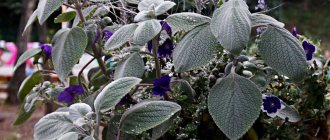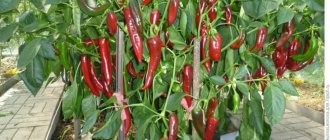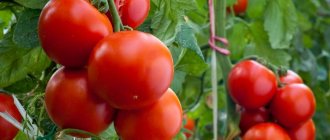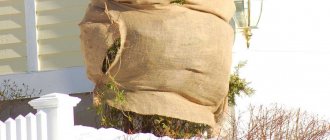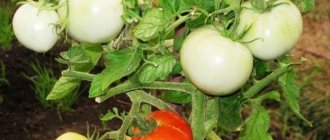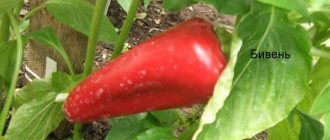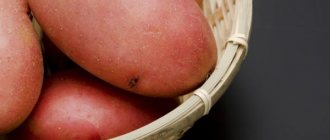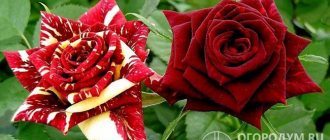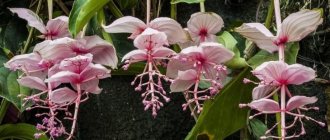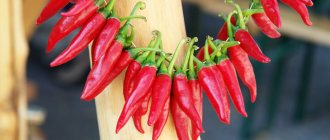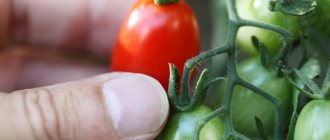Photo gallery
Plectranthus is not poisonous. On the contrary, it has many beneficial properties and is actively used in cooking and folk medicine, and essential oils made from it not only give the air a pleasant aroma, but also fight pathogenic microbes.
Use is contraindicated for people with individual intolerance, as well as pregnant women and hypotensive patients.
Beneficial and harmful properties of plectranthus: time-tested facts
An in-depth study of the plant showed that its main advantage is its essential oils. In addition, it contains the following chemicals:
- carbohydrates;
- proteins;
- glycosides;
- alkaloids;
- phenolic compounds;
- quinine;
- carvacrol;
- cineon;
- quercetin;
- thymol;
- ursulic acid;
- eugenol;
- tanning elements.
At first glance, the names are not clear, but their effect on the human body is more than obvious. The medicinal properties of plectranthus appear when it is used to relieve itching, as an anti-inflammatory, diuretic and sedative. A paste of finely chopped leaves is applied to insect bites to relieve swelling. Tinctures from the flower are prepared for rinsing the mouth and throat.
Considering the beneficial and harmful properties of plectranthus, young mothers use it to treat diathesis and diaper rash in young children. In this case, dried herbs are suitable, from which decoctions are prepared (half a glass of herbs is poured with boiled water and left for an hour and a half).
Since the plant has a calming effect on the body, many people use it to treat urinary incontinence in children. Regular bathing in a herbal decoction 20 minutes before bedtime helps combat the problem.
Interestingly, aromatic plectranthus is widely used to treat diseases in a traditional way. For example, in India it is planted in front gardens to be used in emergencies. If household members vomited from malaria, diarrhea or helminthiasis, tinctures from the plant helped relieve attacks of malaise until the doctor arrived. And the leaves of the flower were applied to wounds from scorpion bites. In South Asia, young children are given the juice of the plant to prevent colds.
In many countries around the world, indoor mint is actively used in cooking. It is added as an aromatic seasoning to soups, salads, meat and fish dishes. In Jamaica, cooks bake mint leaves in batter, and in France they add them to syrups, liqueurs and wine. Italians put plectranthus in first courses and sweet desserts. This popularity is explained by its unique properties and pleasant aroma.
Flowering and fruiting
The leaf blades are round, oval or elongated, have jagged edges and a matte with a slight fluff or glossy surface. Monochrome or patterned leaves can be green, purple-red, or white.
In summer, small white, blue or purple flowers appear on the plectranthus, consisting of 5 petals fused at the base, collected in 6–10 pieces. into spike- or umbrella-shaped inflorescences. After pollination, the ovary of the fruit occurs, opening independently when ripe.
Flowering indoor mint does not add to its decorative appearance, but makes it more sloppy and weakens the plant, so the buds should be cut off.
Uses of mint
Evergreen Mexican mint has analgesic, expectorant, diuretic, anti-inflammatory and diaphoretic properties, is known for its moderate sedative effect and is an excellent antioxidant.
The scope of application of Cuban oregano is quite wide:
- In cooking. Plectranthus is a spicy crop similar in aromatic and taste properties to oregano and thyme. Fresh and dried leaves of indoor mint are used to season vegetable, meat, and chicken dishes. Mint adds a refined taste and subtle aroma to lamb, beef and game. Spanish thyme adds a special charm to stews, stuffings, soups and sauces.
- In floristry. Plectranthus is a favorite crop of most gardeners. The decorative and antibacterial properties of a houseplant with the scent of mint and lemon encourage many florists to use the flower in the decor of a room, terrace, balcony, winter garden, or greenhouse. In the subtropics and tropics, French thyme is a regular in gardens and vegetable gardens.
Important! The pronounced phytoncidal properties of the indoor flower with the scent of mint and lemon contribute to the rapid destruction of pests. Perennial essential oils refresh the air in the greenhouse, giving lightness and a pleasant aroma, a positive mood, performance and internal harmony are ensured.
- In medicine. The benefits of plectranthus in folk medicine are achieved through phytoncidal properties, expectorant, diaphoretic, diuretic, anti-inflammatory and analgesic effects, and has a moderate sedative effect.
- At home. The pleasant lemon-mint aroma of plectranthus and the phytoncidal characteristics of indoor mint are highly valued by residents of many countries when creating sachets for scenting linen and clothing.
Popular varieties of plectranthus
At home, you can grow several varieties of indoor mint. The following varieties are popular among Russian gardeners: Ernst bush, felt mint, Limelight, Ertendahl variety, whorled, Uvongo, Mona Lavender. The Madagascar culture is considered the most beautiful (the second name is Plectranthus coleus).
Signs and superstitions
Among the many superstitions associated with the spur flower, the most often mentioned is its ability to attract financial well-being to the family, attract wealth and good luck.
The wilting of a flower indicates possible financial difficulties and the need for change. There is no need to keep a dying plant in the house - it acts as a magnet for negativity and all sorts of troubles.
As a symbol of abundance and prosperity, plectranthus is an ideal plant for determined people who are able to take risks and radically change their lifestyle for the sake of financial stability.
In addition, indoor mint promotes relaxation, improves mood, helps avoid anxiety and get rid of insomnia.
Indoor mint and general characteristics of the plant
Plectranthus or indoor mint is a perennial, fast-growing plant. Belongs to the genus of the Lamiaceae family, which unites up to 350 species. Most are shrubs, up to 40 cm in height. The plant, depending on the species, can be either upright or creeping along the ground. The leaves are oval, velvety or smooth, with small teeth along the edges. They grow in pairs, crosswise.
They come in both pure green in different shades and with patterns. One of the few plants whose leaves are more attractive than the inflorescence. Thanks to the glands containing essential oils, the fleshy leaves of the plant release an elegant, subtle note of mint aroma that will fill your home. The stem is ribbed, covered with bright green or red-brown skin. It can be smooth or slightly covered with fluff.
Plectranthus is native to the tropics and subtropics, mainly in the Southern Hemisphere. It has many names, the most common of which are: “spur flower”, “fly fly”, “moth tree”, “cock spur”. In Scandinavia, this plant is especially revered, where it received another name - “Swedish ivy”.
Beneficial features
Spurflower is an attractive plant and has many beneficial properties. It, like the usual garden mint, has a healing effect:
- has a beneficial effect on the nervous system of people living in the house;
- promotes restful healthy sleep;
- is a diuretic;
- cleanses the room air from pathogenic bacteria;
- helps relieve headaches;
- helps improve well-being during inflammatory processes;
- has an effective expectorant property for dry cough;
- Eastern healers use it for gynecological diseases;
- panacea for liver diseases;
- due to the content of tannins and astringents, it perfectly helps in the fight against nausea;
- A washed and softened plectranthus leaf applied to a mosquito bite will help relieve irritation and also has a cooling effect due to the presence of menthol.
- is an excellent tonic when used in the preparation of cold drinks on hot summer days.
In addition to medicinal properties, this plant has other qualities. It is not for nothing that they call it “fly fly” or “moth tree”, since that exquisite aroma that we love so much is actually disgusting to some insects. Just dry the leaves, fill a small bag with them and put it in a closet or on a shelf among your things. You will get a pleasant aroma on things and get rid of moths. And by placing mint in a pot on your windowsill at home, you will significantly reduce the number of mosquitoes and flies.
Popular: Ten types of evergreen Monstera vine for an apartment
The bonus of the plant is its ability to replace several spicy cooking seasonings at once. Indeed, depending on the type, mint may be similar to thyme and oregano.
Is it suitable for shaping bonsai?
Some types of plectranthus eventually form a caudex - a thickening between the roots and the crown, subject to regular pinching and branching work, giving the plant the appearance of a miniature bonsai-style tree.
To rejuvenate and obtain a more luxuriant crown, you should annually pinch out young shoots in the spring and shorten by half the old shoots that have stretched out after winter.
Expert opinion
Mokhov Andrey Petrovich
Graduated from KubSAU, specialty: agronomy
Dry branches affected by diseases or pests can be pruned throughout the year.
Can you make tea from plectranthus?
It was used in ancient times, but even in our time, aromatic medicinal tea is also brewed from dried plectranthus leaves.
It is enough to throw a small handful of raw materials into the kettle and pour boiling water over it, let it cool, and the healing drink is ready.
In folk medicine it is used for:
- Relieves colds and flu from sore throat, cough and runny nose.
- Treatment of the nervous system, it has a mild sedative effect - helps with insomnia, as well as cope with anxiety and stress.
- Eliminates most gastrointestinal problems: indigestion, irritable bowel syndrome, spasms and pain in the epigastric region, flatulence and diarrhea, nausea.
- It is used in the treatment of the musculoskeletal system, as an auxiliary and anti-inflammatory agent for rheumatoid arthritis.
- It has antibacterial, antifungal, antimicrobial, hepatoprotective properties.
- Helps with swelling, removes excess fluid.
- Prescribed for kidney and bladder stones.
- Externally, a decoction of plectranthus is used to treat weeping diathesis in very young children, diaper rash and bedsores in patients, eczema and psoriasis.
Fresh plectranthus leaves are applied to treat bites and ulcers.
Whatever healing properties plectranthus has, it must be taken into account that there are contraindications and allergies and itchy skin may occur on sensitive skin. And always consult a doctor!
Cooking
Indoor mint
The pleasant, but extremely strong taste and smell of fresh mint can drown out the taste of the main products, and therefore this herb should be added to dishes in very moderate quantities. Dried mint is not as harsh and is a common food seasoning in Mediterranean and Arab countries.
Of all the culinary herbs, mint goes well only with parsley, thyme, marjoram, sage, oregano and coriander. It is added to yoghurts, Vietnamese and some Indian dishes.
Peppermint is most often used in cooking, mainly as a classic seasoning for fried lamb, potatoes, peas and salads. They also brew a delicious tea for digestion. Essential oil is added to ice cream, confectionery and liqueurs.
Microclimate
Lighting
It is necessary to provide the spur flower with bright, diffused lighting. Exposure to direct sunlight negatively affects the decorative appearance of plectranthus - burns appear on the foliage, and the stems become bare over time.
It also does not tolerate shade well - the shoots stretch out, the leaves turn yellow and fall off, so in the cold season it is necessary to use phytolamps.
Expert opinion
Mokhov Andrey Petrovich
Graduated from KubSAU, specialty: agronomy
To avoid uneven development of the crown, the flower should be regularly rotated relative to the light source.
Temperature
Grows well at temperatures of +18–25 °C in spring and summer and +12–16 °C in winter. When the indicators drop to +10 °C, the flower sheds its leaves and dies.
Air humidity
Indoor mint is not demanding on the level of humidity in the room, but on days when the temperature is above +20–22 °C, it is necessary to spray the plant to minimize the likelihood of complete loss of moisture.
Comfortable place for a flower
Plectranthus does not react well to drafts and does not tolerate streams of hot, dry air, so you should not place the flowerpot near heating appliances.
The most suitable place is the window sills of western, eastern or southwestern windows.
Home care
When purchasing plectranthus, home care should be based on the fact that the plant comes from a subtropical climate. It is characterized by long daylight hours, warmth and high humidity.
Watering
The plant requires abundant watering, especially during the growth period. Spraying is also welcome as a way to create conditions of high humidity. This is especially true in the hot season, when the room temperature is above 22 degrees.
Note! It is important that the soil in the pot does not dry out completely. Although if this condition is maintained for a short time, nothing will happen to the plant. Water for irrigation is used at room temperature, it is pre-settled
Water for irrigation is used at room temperature and pre-settled.
Sometimes the plant is given a warm shower, first covering the pot with film so that the liquid does not get into the soil. The procedure will help get rid of dust accumulating on the leaves.
If there is insufficient air humidity, you can use pebbles or expanded clay. To do this, drainage material is immersed in water and poured into a container on which a flower pot is placed.
In winter, the flower hardly grows, so the frequency of watering is reduced. Once every 4 days is enough. At this time, on the contrary, excessive waterlogging is dangerous, which can lead to stagnation of water and rotting of the root system.
The soil
The soil for growing plectranthus should not be too dense. You can purchase a ready-made mixture or make it yourself. For this you will need:
- humus - 2 parts;
- turf – 2 parts;
- leaf soil - 1 part;
- sand (river) – ½ part;
- peat – ½ part.
Top dressing
You need to feed the plant with fertilizers from the beginning of spring to the end of summer. They must be paid once every month. To do this, use fertilizers intended for flowering flora. You can alternate organic and mineral products.
Temperature
Plectranthus mint lives comfortably at average temperatures, that is, at 20-22 degrees. It does not bloom in winter, there is no active growth, so it needs cooler conditions.
Important! The main thing is that the temperature does not drop below 15 degrees. Otherwise, the plant will begin to wither, the leaves will fall off, which may ultimately lead to death.
If you cannot arrange a flower in a room with a cool temperature during the cold season, you need to provide it with additional lighting.
Lighting
Indoor mint loves bright, but diffused sunlight and does not tolerate direct rays. It is ideal to place the flower pot on a windowsill facing southwest.
Plectranthus in sufficient light
If there is a lack of sun, additional lighting must be provided artificially, otherwise the color of the leaves will become dull, which will affect the attractiveness of the plant.
What kind of soil is needed?
The soil should be nutritious, light, well-permeable to moisture and air, and slightly acidic (pH 6).
You can use ready-made soil for indoor decorative foliage plants or make it yourself by mixing in equal proportions:
- river sand or perlite;
- deoxidized peat;
- leaf soil.
Before using the soil mixture, it must be steamed or frozen - this will disinfect the substrate and help get rid of pests.
Procurement and storage of raw materials
The aerial part has medicinal value. For self-harvesting, mint leaves are most suitable, which should be collected in dry weather at the beginning of flowering.
The raw materials are dried in air, in the shade. If leaves are collected, they are dried on clean paper, if branches are collected, they can be dried with awnings. Mint dries well and quickly, after which it is placed for storage in cardboard boxes. The shelf life of dry raw materials is 2 years.
The raw materials should be crushed immediately before preparing the medicine, but not in advance, so as not to lose valuable essential oil.
Transfer
Transplantation is carried out in the spring. Young plants need this procedure annually, specimens older than 5 years – once every 2–3 years. Replacement of soil and flowerpot is required if:
- the roots grew and the pot became cramped;
- the plant was recently purchased;
- the flower is planted in a transportable or simply unsuitable substrate;
- there are pests or a disease has developed.
It is necessary to prepare in advance drainage from pebbles or clay shards, suitable soil and a flowerpot corresponding to the size of the root system - if the pot is much larger, the undeveloped soil will begin to sour and the spur flower will die. Do not use wide or flat containers without holes for drainage.
At home, ampelous varieties of plectranthus are conveniently grown in hanging flowerpots.
Damage to the roots is unacceptable, so replanting should be carried out using the transshipment method, maintaining the integrity of the earthen coma:
- fill 1/3 of the new flowerpot with drainage, cover it with soil;
- Carefully remove the plant from the old pot and place it together with a lump of earth in the center of the new one;
- fill the voids with the remains of the soil mixture;
- water the flower.
After transplantation, the spur flower should be protected from bright light for 7–10 days.
Features of care
Indoor mint - how to plant and care
All varieties require certain maintenance conditions, otherwise the plants will quickly lose their attractiveness and die. Plectranthus can tolerate small disturbances, but they should not be of long duration.
Primary requirements:
- Temperature - during the period of active growth (from May to October) the optimal indicator is 25 ° C, in winter it is about 15 ° C. A slight increase or decrease is not considered critical.
- Lighting: diffused light, daylight hours are at least eight hours. This is especially important for variegated varieties.
- Spraying - the procedure is carried out only in hot weather to prevent the plant from drying out.
- Watering is plentiful during the period of active growth. The soil should always be moist. In winter, the amount of watering is reduced and the top layer of soil is allowed to dry out.
- Fertilizing - it is better to use universal products for ornamental plants. They are applied once every two weeks during the period of active growth; in winter, fertilizers are not used.
Caring for plectranthus is not that difficult, but some varieties require special conditions.
Golden Ruffles need good lighting, otherwise the leaves will be completely green
The plant should not be placed in a dark place, otherwise the branches will stretch out greatly. With a lack of watering, Plectranthus Coleoides loses its variegated color.
Reproduction of plectranthus
Indoor mint is propagated by cuttings, dividing the bush and seeds. To do this you will need:
- container with water;
- polyethylene or can;
- charcoal;
- sharp knife.
By cuttings
To propagate a plant using this method you must:
- in spring or summer, cut cuttings maximum 10 cm long;
- put them in a container with boiled water;
- put a piece of charcoal on the bottom to avoid rotting;
- cover the cuttings with polyethylene or a jar to create a greenhouse effect and accelerate root formation;
- 2-3 weeks after the roots appear, transplant into separate containers with suitable soil.
You can root the cuttings immediately in a loose and nutritious soil mixture, deepening them no more than 1 cm.
Expert opinion
Mokhov Andrey Petrovich
Graduated from KubSAU, specialty: agronomy
Leaves can also act as cuttings.
Dividing the bush
The method is used during the annual spring transplant:
- remove the plant from the pot and lightly shake off the soil from the roots;
- Use a sharp knife to divide the rhizome into several parts;
- Sprinkle the cut areas with crushed activated charcoal or charcoal;
- plant the cuttings in individual flowerpots.
Plants with a developed root system are suitable for this method of propagation.
Seeds
Seeds should be sown in April-May on the surface of the soil, without deepening, and kept at a temperature of +20–24 °C. A week after the emergence of seedlings, you can begin moderate watering, and a month later, transplant the seedlings into separate pots.
This method is more often used by professional breeders when breeding new plant species.
Growing from seeds
Planting in open ground outside the house
Sowing mint in open ground begins in early spring (April) and in the summer at the beginning of August. If you use the seedling method or growing using cuttings, then mint should be planted in the 2nd - 3rd decade of May. The plant requires a well-lit place and also tolerates slight shading.
Before planting, the area must be cleared of weeds. To obtain high-quality raw materials, you can apply fertilizer to a depth of twenty centimeters. 15 grams of potassium chloride, ammonium nitrate and superphosphate are added per square meter. You can add ash in the amount of two tablespoons.
For planting, shallow holes are made (about 5 - 6 centimeters). The distance from each other is 40 cm. The distance between plants should be in the range from 30 to 50 centimeters. After this, the holes are filled in and watered until the soil is completely moistened to a depth of 10 centimeters.
Care in open ground consists of timely watering, weeding the area from weeds and fertilizing the plants.
It is necessary to take preventive measures to prevent infection of mint with diseases, as well as to protect it from pests.
How to plant indoors or on a windowsill
The first step in this procedure is the preparation of a quality substrate.
For this purpose, you need to mix in equal quantities:
- humus
- peat
- sand
- garden soil
The resulting mixture must be disinfected with a weak solution of potassium permanganate, then the substrate must be heated at high temperature. In this way, you can protect planting material from damage by pests and diseases.
Seed material can be prepared personally at home or in the garden, or purchased in a store.
Seeds are sown in a pot or other suitable container. The substrate must be kept moist. Sow the seeds to a depth of five centimeters. After sowing, the substrate can be moistened a little more with a spray bottle and covered with glass or transparent polyethylene. It is advisable to place the prepared container in a warm place.
The seeds will begin to hatch in about one to two weeks. After the seeds have sprouted, they must be placed in a more illuminated place. This procedure will prevent the seedlings from being pulled out.
If there is not enough light, then you need to additionally illuminate the mint using a phytolamp.
The temperature should be between 20 and 25 degrees Celsius. But if the plants do not receive enough light, then the temperature should be below the specified threshold, approximately 15 - 18 degrees.
After two to three true leaves appear, the mint needs to be picked. After this, it is necessary to monitor soil moisture, ventilation of the room, fertilizing, etc.
Selecting a seat
It is advisable to allocate a separate place for mint from other crops that grow on the site. If you incorrectly determine the mint's proximity, it may suffer. Usually dark colored spots appear. Do not place mint close to cabbage, beets or cucumbers.
If organic fertilizers were added to the soil last year, then such soil will be highly preferable for mint. The substrate should be loose, with a moist and fertile layer of soil. Chernozem fits this description well.
Open bright place for mint
The planting site should warm up well under the sun, and at the same time not overheat. A good option would be short-term partial shade during the period of maximum temperatures of the day.
Creating a mulch layer will protect the soil from drying out and maintain soil moisture. When grown in poor soils, such as limestone areas, the plant loses its inherent aroma.
Over-watered or waterlogged areas will severely inhibit mint.
Watering
It is important to ensure that the earthen ball does not dry out or become waterlogged. In the first case, the danger lies in poor flowering, in the second - in the risk of developing root rot.
In the spring-summer period, the spur flower should be watered as soon as the top layer of soil dries, in winter - when the soil dries 2-3 cm deep, i.e. approximately once every 3-4 days.
Expert opinion
Mokhov Andrey Petrovich
Graduated from KubSAU, specialty: agronomy
Water should be settled or filtered, at room temperature.
If you are going on vacation
Wick watering is the best option during a long absence.
To do this, take a fabric cord, place one end of it on the surface of the soil and lightly sprinkle it, and place the other end in a container of water, which must be placed above the pot with the plant.
Landing
In order for your decorative mint to take root and not die, you need to prepare a little. The plant will not tolerate high acidity in the soil. The soil for planting must be fertile and of high quality; you can either buy it in a store or make it yourself.
Before pouring soil into the pot, it is necessary to lay out a drainage layer three centimeters high. For which you can use small pebbles, broken bricks or expanded clay. Then you can start disembarking. It is important, when filling up the roots of plectranthus, not to compact the soil. Firstly, this can damage the root system, and secondly, the spur flower loves loose, breathable soil. At the end of planting, the plant must be watered abundantly.
Popular: Planting the four best varieties of raspberry trees
Diseases. Table
| Disease | Signs | Treatment |
| Downy mildew | The appearance of gray spots on leaf blades | Remove the affected parts of the flower, reduce the frequency of watering, spray with fungicides (Bona Forte, Storby) |
| Root rot | Wilting of leaves, delamination and rotting of roots | Replant the spur flower, replacing the soil and pot and cutting off all damaged roots, treat with Discor, Glyokladin or Fitosporin. |
Pests. Table
| Pest | Signs | Reasons for appearance | Ways to fight |
| Spider mite | A thin web appears on the leaves and petioles | Low humidity levels, drying out soil | Use acaricides (“Apollo”, “Omite”) to treat the plant |
| Aphid | The leaves lose their brightness, small light green insects are visible on them and the stems | Insufficient lighting and watering, excess or lack of fertilizers | Spray with a decoction of herbs that have an unpleasant odor, and in case of severe damage - with “Aktara” or “Inta-Vir” |
| Shchitovka | Brown growths form on the shoots | Growing in a cold or too warm room, lack of nutrients | Treat mint with Aktara, Fufanon or Metaphos |
| Whitefly | Small white insects with wings are visible on the plant | Keeping at high humidity and air temperature | Replant and replace the soil, treat the flower with Actellik or Confidor |
How to use mint
In fact, the scope of application of this useful plant is quite wide. So in the kitchen, fresh leaves of this plant are an excellent addition to tea or fruit juice. Many people add leaves to kvass. Drinks with mint are refreshing and invigorating. Dry leaves can be used to season vegetables.
In the home medicine cabinet
This beneficial herb is widely used in various traditional medicine recipes. At the same time, peppermint enjoys special respect among healers. For example, with high acidity, it is good to drink tea with mint, and with tachycardia (that is, with a high pulse), it is advised to inhale the aroma of menthol.
In the bath
Mint is also very good for a bath. Since ancient times in Rus', not a single real bathhouse could do without this useful herb. Steam when brewing mint can destroy harmful bacteria not only on the surface of the skin, but also in the respiratory tract of mint steam lovers. And our ancestors knew all this very well.
In the cosmetic bag
Mint will also find its rightful place here. In summer, we always recommend keeping refreshing mint wipes with you.
This plant will help if you suffer from headaches. Do you have a headache? There is no need to rush and take the pills right away; we advise you to drink tea with the addition of mint leaves. So, after conducting relevant research, scientists concluded that this plant has an analgesic effect.
Massage oil containing peppermint is an excellent remedy in the hot summer. The bright, rich aroma of this plant perfectly stimulates when the body is overtired and quickly helps to restore strength.
We recommend using mint widely in preparing a variety of salads, soups and sauces. The wonderful smell of this incomparable plant helps relieve irritability, so you will prepare not only a very tasty, but also a very calming dish.
Delicious dessert with mint
And finally, a summer dessert for you – chocolate with mint. To prepare it, we need one bar of dark chocolate, cream (25%) - 200 g for subsequent whipping, one lemon and two sprigs of mint. This is all prepared in the following sequence. Whip the cream. The chocolate should be broken and melted thoroughly in a water bath. After that, cool it and mix it with cream. The lemon zest should be grated on a fine grater, the mint should be finely chopped and all added to the previously prepared chocolate-cream mass. Bon appetit!
This is how you can use mint at home. You can learn more about the beneficial properties of this plant and how it can be used from this video.
Problems with leaves. Table
| Problem | Cause | Solution |
| Leaves curl and fade | Result of exposure to direct sunlight | It is necessary to shade the plant |
| The leaves turn yellow and fall off | Low air temperature or excess moisture | Regularly spray the spur flower, adjust the watering regime |
| drooping foliage | Keeping in a hot place, insufficient moisture | Ventilate the room periodically, increase watering and spraying frequency |
Types of plectranthus with photos and names
Plectranthus coleoides
It is characterized by erect shoots and large leaf blades, reaching a length of 6–8 cm and decorated with a beige or white border.
The appearance of spots or stripes on the leaves is the characteristic color of this variety.
Fruticosus (Shrub)
The height of the plant reaches 1 m. Monochrome green leaves with a fleecy edge are heart-shaped and release essential oils when touched.
This variety has a pronounced mint aroma that repels moths.
Hadiensis (Felt)
Compact plant with ampelous shoots. The foliage is pubescent, light green in color.
Oertendahlii (Oertendahlii)
It is characterized by carved, round, velvety leaves, colored green on the outside and pinkish-red on the inside.
Given enough light they turn completely red.
Australis (Southern)
This crop has horizontally growing green shoots and rounded leaves with a waxy coating that enhances their glossiness.
Among the shortcomings is the lack of aroma.
Verticillatus (Whorled)
It is distinguished by purple stems and bright green leaf blades with white fibers, on the inside of which there are red-purple veins.
Forsteri (Forster)
This variety grows horizontally, its vegetative organs reach a length of 1 m.
Green leaves with noticeable relief are ovoid in shape and decorated with white spots and fibers.
Plectranthus amboinicus (Fragrant)
A variety characterized by a spreading, highly branched crown. There are small fibers on the trunk.
The leaves are large, oval or heart-shaped near the base and obtuse at the apex.
Ernestii (Ernsta)
Perennial, not exceeding 50 cm in height. Forms a caudex with a diameter of about 10 cm.
Plectranthus ernestii
The leaves are heart-shaped, one side is green and the other purple.
Mona Lavender (Mona Lavender)
The leaf blades are glossy, dark green on the outside and purple on the inside.
Mint varieties for growing on a windowsill
In apartment conditions, the same varieties and varieties are suitable for growing as for open ground.
Popular varieties include:
- Pepper;
- Feline;
- Curly;
- Home;
- Menthol;
- Lemon;
- Chocolate.
When talking about which variety of mint is best to grow on a windowsill, you need to take into account the dimensions of the chosen location, the height and spreading nature of the adult plant. It is better to choose varieties that are characterized by small roots and a compact above-ground part:
| Variety | Description |
| "Ceremony" | A small bush with deep green leaves. Rich in menthol, has a deep aroma. Excellent for culinary purposes. |
| "Fun" | Shade-tolerant variety. The bush does not exceed 50 cm in height. The taste of the leaves is fresh, menthol. |
| "Pennyroyal" | Compact bush with small purple-green leaves. The aroma is intense. Used for making cocktails and other drinks. |
| "Spearmint" | Low (35-60 cm). It has oval dark green leaves. The aroma is strong and cooling. Ideal for meat dishes and salads. |
If room conditions allow, you can grow larger varieties: Menthol, Moskvichka, Pepper Garden.
